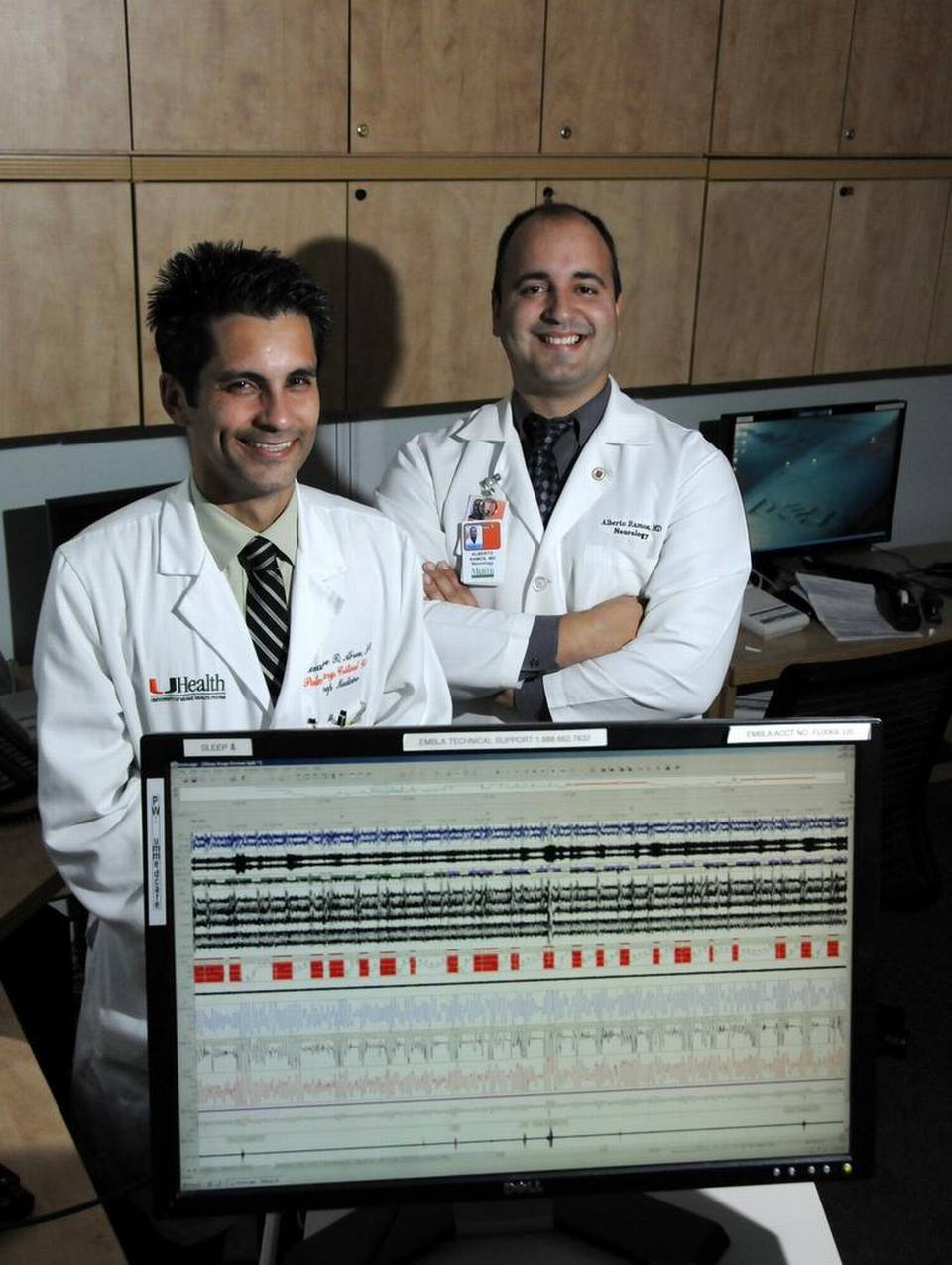Lance Vanschaik had been told by significant others that he had a snoring problem. He was often tired during the day, falling asleep at work and taking naps when he got home. When Vanschaik found himself dozing at a green light, he knew it was time to see a doctor.
It turns out Vanschaik is one of more than 18 million Americans who suffer from sleep apnea. The sleep disorder occurs when breathing is interrupted during sleep. As a person’s throat relaxes, their airway becomes blocked, which awakens them continually throughout the night, leaving them gasping for air. The disease is often associated with obesity, but can be caused by how a person’s mouth and nasal passages are structured.
The health risks associated with leaving sleep apnea untreated are serious. Dr. Jeremy Tabak, medical director of Baptist Hospital’s Sleep Center and Baptist Sleep Center at Galloway, says sleep apnea is “not just a question of snoring.” Patients can suffer from increased risks of high blood pressure, heart attack and stroke, among other cardiovascular problems. On a more immediate, day-to-day level, people with sleep apnea are exhausted throughout the day because their constant awakening keeps them from entering deep sleep.
Dr. Alberto Ramos, co-director of the UHealth Sleep Center at the University of Miami, notes that sleep apnea can have cognitive effects as well. “We know that because the oxygen levels drop, that depriving the brain of oxygen over time may lead to poor memory, and in some cases may contribute to the development of Alzheimer’s,” Ramos said.
The traditional method of treating sleep apnea involves using a machine for CPAP therapy, or continuous positive airway pressure, that pushes air into the lungs at night. Dr. Rolando Molina, a specialist in sleep medicine otolaryngology who works with Tabak at South Miami Hospital, calls CPAP the “gold standard treatment” for sleep apnea. But many people find CPAP machines, and in particular, the masks one must wear at night, uncomfortable.
“For me, using the CPAP mask on my face was always very claustrophobic,” Vanschaik said. “I have a drawer full of 30 different masks.”
Worse yet, Vanschaik says, as a single man, bringing a prospective partner home and trying to explain why he has a machine connected by tubing to a breathing mask can be an awkward conversation.
“It was embarrassing when people would come over, because it looks like this huge piece of medical equipment on your nightstand,” Vanschaik said.
Alternatives to using a CPAP machine include the BiPAP (bilevel positive air pressure), oral breathing devices and several different types of surgery. Although BiPAP machines are effective, they tend to be more expensive and still use masks for breathing.
Oral breathing devices are often used for less severe cases, but are not as effective. Finally, most surgeries to treat sleep apnea, which typically entail removing tissue in the throat, or a rearranging tissue, are painful, complicated and not nearly as effective as CPAP.
But Molina, who has been performing sleep apnea surgeries for more than 15 years, sees hope for patients like Vanschaik, who can’t tolerate the machines and do not want the traditional surgery.
The relatively new treatment involves a device surgically implanted under skin on the chest. Known as hypoglossal nerve stimulation, the treatment stimulates the hypoglossal nerve, which controls the base of the tongue. The device, connected to a tube that goes up the neck to the nerve, emits a mild electrical current during sleep. The current causes the tongue to stiffen, opening up the patient’s airway.
“For the first time in a long time, we have something that’s completely different,” Molina said.
Tabak stressed the treatment is not for everyone and it isn’t a panacea, but it provides another option for people who can’t tolerate using a CPAP. Studies have shown that nerve stimulation increases airflow for those with sleep apnea.
Vanschaik was Molina’s first patient for this procedure, performed at South Miami Hospital, part of Baptist Health South Florida. Vanschaik had the device implanted eight months ago and says he feels “awesome.” At first, he expected immediate results, like “magic,” but “improving quality of life is not something that happens overnight … it’s a process.”
The device took a few weeks to get used to, but now he said he has no problem sleeping with it. Although he had some pain from the incisions the first few days, Vanschaik said, “I didn’t feel like there was anything foreign implanted in me.”
Vanschaik’s energy levels have improved. He has even been waking up early on his own. His sleep apnea has “almost become a non-issue,” he said. “There’s nothing I can’t do since I got this implant that I couldn’t do before.”
He said he’s even gone spearfishing since, diving down more than 100 feet, even though the device manufacture recommends not diving more than 33 feet because of a lack of research on the practice. Vanschaik said there’s a faint outline of where the device is implanted, but “it’s not something I’m embarrassed to go out in public and take my shirt off with.”
When friends ask him if he regrets getting the surgery, Vanschaik replies, “I think it was the best thing I ever did.”
Fuente: www.miamiherald.com
